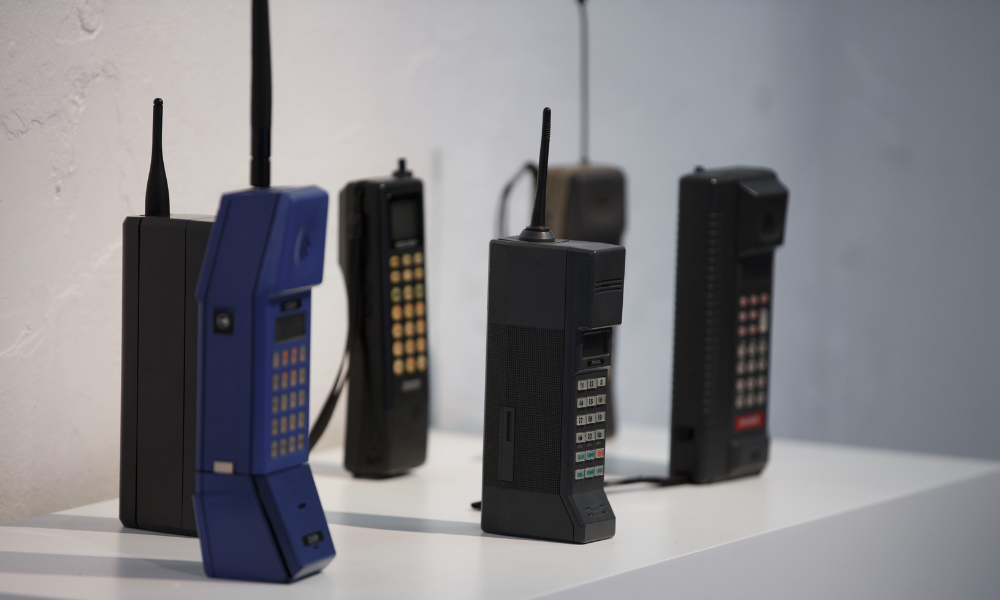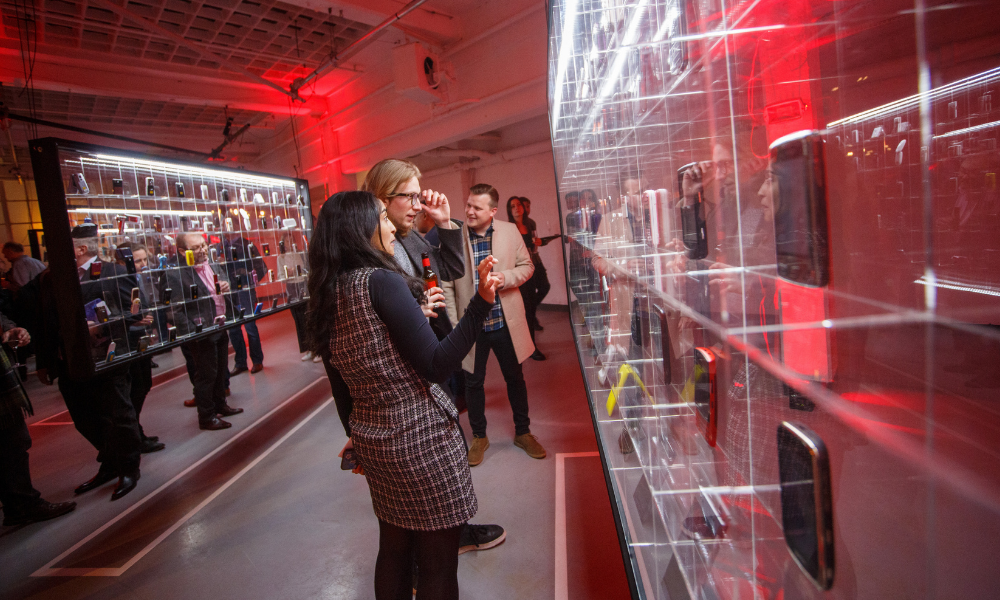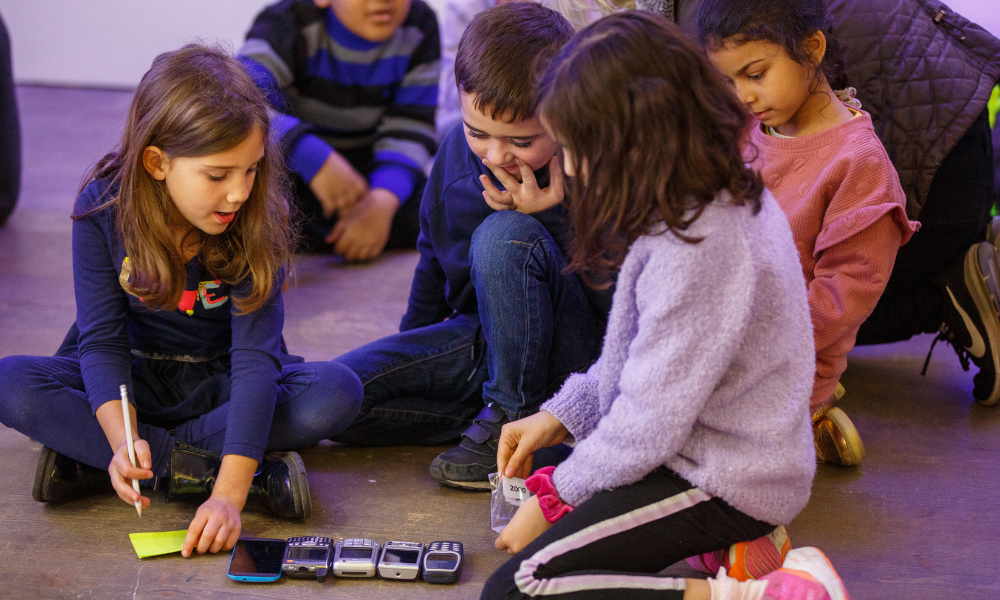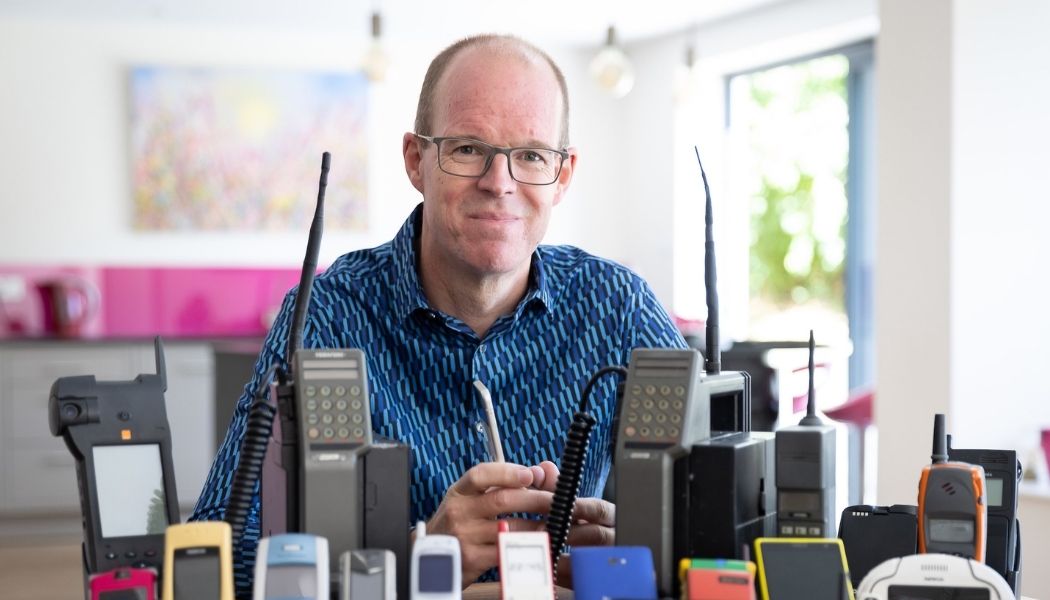Ben Wood had been working in the mobile phone industry for 25 years when the idea to found a museum became reality.
Alongside his work in the industry, which includes being involved in the launch of SMS and cellular data, mobile phones are his collectable of choice. It was in 2004 when that collection first became the inspiration for an official museum.
The story of the resulting Mobile Phone Museum is one filled with the buzzwords you’d expect from the technology sector; angel investors, crowdfunding, digital-first thinking, and an entrepreneurial mindset.
It could be argued that there’s little urgency for a mobile phone museum. Afterall, the vast majority of us have one in our pocket, and likely two or three more buried in a forgotten drawer.
Estimates of smartphone ownership go as high as 80% of the world’s population. These glass rectangles or ‘black mirrors’ (from which the TV show gets its name) are abundant.
But despite the smartphone’s relatively short history of around 35 years, their supercharged design evolution is filled with novelty, variety, and – in the museum’s own words – sometimes ugly design choices.

What’s more, the earliest devices are appreciating in value as though they were antiques. An unopened first generation iPhone, for instance, is currently listed on eBay with a £20,000 price tag.
Added into this a STEM skills gap in the UK, and the pitch for a museum as a source of inspiration for young people makes the idea even more compelling.
Wood, who has led the project and last year brought in a small team to create the not-for-profit entity, remains an avid collector alongside co-curator Matt Chatterley, whose day job is Director of Devices at BT.
The registered charity, already a member of the Museums Association, officially launched its ‘virtual’ manifestation just weeks ago. Wood told Advisor that a permanent location had been ruled out by the team during lockdown.
The “bricks and mortar approach to a museum seemed like a broken business model,” he said, though that could change.
“Given we were a team coming from the technology industry, we came up with the concept of a ‘virtual museum’ that would immediately have a global audience and would be a lower risk way to get the venture up and running.”
While the Mobile Phone Museum is not the first museum to be created in a virtual space, and indeed virtual reality museums are finding their feet with visitors, Wood said the museum is “confident we can be trailblazers of the ‘virtual museum’ concept.”
A launch event held last week in London’s Soho, co-hosted by lead sponsor Vodafone, and attended by mobile industry figures, was the first of a series of planned physical outings for some of the devices. The event featured an appearance from Dom Jolly, who dusted off his now infamous giant mobile phone for a rendition of the ‘HELLO?!’ Trigger Happy TV sketch.

Tech-based revenue generation
With entrance fees ruled out, the museum is reliant on three sources of income. The first in digital donations from visitors, the second through a five-year lead sponsorship with Wood’s former employer Vodafone, and the third in angel investor and mobile phone sector entrepreneur Kamil Vacek.
“[Vacek] helped us develop the brand and build the website and remains an important part of the team,” said Wood.
Other sponsors have since joined, including Wood’s current employer, analysts CCS Insight (where he serves as CMO and analyst), smartphone company Genuine Solutions, web developers Code8 and creative services firm Toman Design.
But despite its virtual nature, the museum has still incurred some real running costs.
“We will need to find further funds to realise our vision for the project but I’m hopeful that will follow in time,” said Wood, who hinted at talks with further “big corporates in the tech space”.

Digitising the collection
Among the biggest costs, says Wood, has been the meticulous photography of the 500 devices currently featured. While there is existing promotional imagery of many of the devices, Wood said he had always felt “great imagery would be key to the experience”.
He said “in many cases we have far better imagery than the official pictures offered when devices were launched.
“I’m sure over time we’ll eventually get all 2000+ phones photographed but the expense is eye watering.”
The museum’s online presence has also given it the opportunity to ‘crowdsource’ key devices which could be sat in those aforementioned forgotten drawers, ready for digitisation.
These sought-after devices include the Huawei KFC Phone, emblazoned in red and engraved with an image of Colonel Sanders.
To begin documenting the history of the devices, Wood has worked with his network of contacts to find information on the many devices already listed including each device’s weight, features, and the codenames used by the manufacturers prior to release.
“The hardest ones to get information on are the pre-1995 models, where there is no digital footprint – for phones after that we can usually find details online or from archives.”
The hardest ones to get information on are the pre-1995 models, where there is no digital footprint
“I’ve worked hard to write up as many as we can but I’ve also started involving other friends in the industry to help me,” he said.
Video content is also in the works, part of a planned archive featuring interviews with key individuals. An interview with a “legend in the industry” is set to be released shortly, he said.
While there is more than enough discourse about the annual cycle of new handsets online through video reviews, Wikipedia pages, and general launch hype, the same cannot be said of the older, forgotten devices of a pre-touchscreen age.
“There is so much knowledge in people’s heads that will get lost if no one records it,” said Wood.

Inspiring a new generation
As the museum’s collection and output grows, the goal of the team is to have a physical pop-up exhibition by 2025, in time for the 40 year anniversary of the first mobile phone call made in the UK.
And while the pandemic has made it hard to get into schools, a major goal of the museum is to provide engineering and technology inspiration to tomorrow’s engineers.
Wood said the museum plans to begin piloting its first workshops in 2022 before a wider roll-out.










